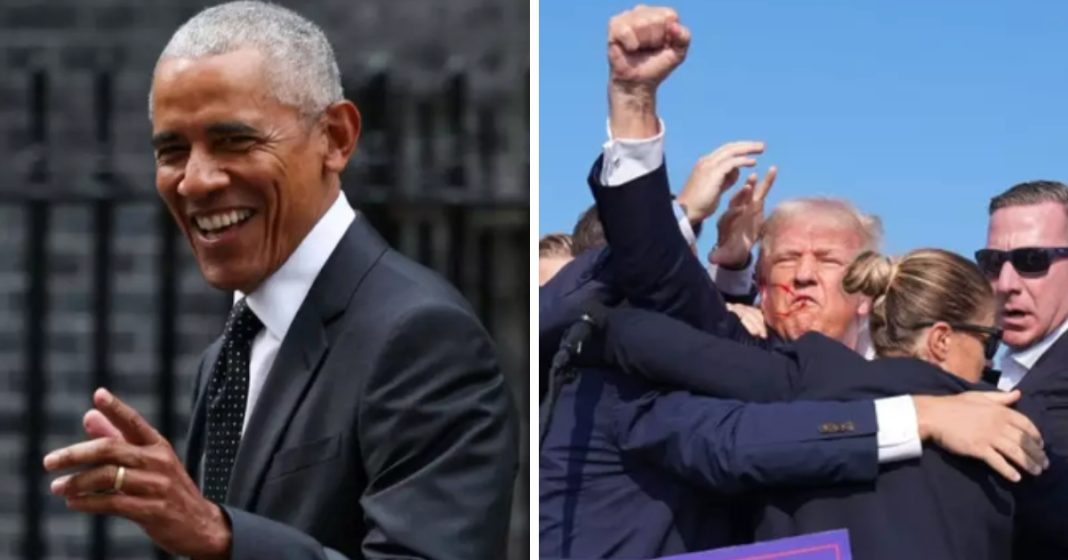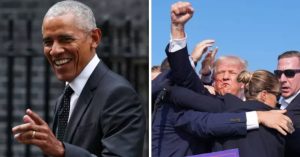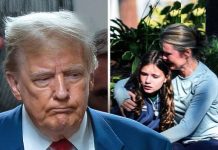Controversial Art Installation at the White House: The Portrait of Donald Trump
The recent decision by the White House to replace the portrait of former President Barack Obama with a striking painting portraying a moment of high tension during a campaign rally has ignited a firestorm of controversy. This painting captures a dramatic scene from July 13 of last year, when a young man named Thomas Matthew Crooks opened fire during a rally in Butler, Pennsylvania, where Donald Trump was speaking. This shocking event not only raised concerns about political safety in America but also about the use of art in political spaces, thus merging two realms that have historically influenced each other in profound and often contentious ways.
Revisiting the Assassination Attempt
The assassination attempt on Trump unfolded as Crooks, a 20-year-old, fired eight rounds from a rooftop, tragically resulting in the death of one individual and injuries to two others. The gravity of the situation intensified when one of the bullets grazed Trump’s right ear, leaving him bloodied yet still able to raise his fist defiantly—a moment that quickly became emblematic among his supporters. The chaotic scene was captured by Associated Press photographer Evan Vucci, whose snapshot has now been transformed into a powerful piece of artwork that resides in the Grand Foyer of the White House’s East Wing. This incident not only serves as a reminder of the violent undercurrents present in American politics today but also raises questions about media representation and its impact on public perception. The choice of this moment, filled with both danger and resilience, reflects Trump’s narrative of strength amidst adversity.
From Obama to Trump: A Shift in Presidential Portraits
Traditionally, the Grand Foyer is reserved for the official portrait of the most recently departed president, which in this case was the photorealistic portrait of Barack Obama painted by Robert McCurdy. This portrait had been displayed since September 2022, symbolizing the first African American president’s legacy and his remarkable presidency. With the introduction of Mark Lipp’s dramatic portrayal of Trump, this long-standing custom has come under scrutiny. The choice to replace Obama’s image with this particular artwork raises questions about decorum and the evolving nature of political imagery in contemporary America. In an era where symbolism often speaks louder than words, the implications of such a shift are immense, inviting discussions about race, power, and representation in the highest office of the land
The Artist and the Gift
The painting of Trump was gifted to him by Andrew Pollack, a GOP activist whose daughter, Meadow, was tragically one of the victims of the devastating Parkland school shooting in 2018. This connection adds a layer of depth and poignancy to the artwork, linking it to a larger narrative about gun violence in America. Pollack’s involvement in the political landscape, especially following the loss of his daughter, positions this painting not merely as art but as a symbol of a national conversation about safety and rights. Pollack has been a vocal advocate for gun rights and school safety reform, making his connection to the painting resonate deeply within the current socio-political climate. This intertwining of personal tragedy with political narrative highlights the complex ways in which art can serve both as a form of expression and a vehicle for advocacy.
Mixed Reactions from the Public
The online reactions to this artistic shift have been distinctly divided. While ardent supporters of Trump have hailed the painting as “epic” and “iconic,” with some expressing emotional responses such as, “This brings a tear to my eye. Some of the greatest art ever made by human hands,” critics have been quick to condemn the move as a breach of tradition. Political strategist Chris Jackson voiced his discontent on Twitter, stating, “So Trump ditched tradition, broke protocol, and took down Barack Obama’s portrait—just to hang his own. Straight-up tin pot dictator energy.” This sentiment reflects broader concerns regarding Trump’s impact on longstanding political customs. The cultural divide in opinions is revealing, underscoring how art in political contexts can galvanize both support and opposition, often reflecting deeper societal divisions.
Legal Concerns and Copyright Issues
Amidst this highly charged atmosphere, there are potential legal complications surrounding the painting’s installation. As reported by various outlets, copyright concerns arise since the painting is based on a photograph from an Associated Press photographer. The AP has a history of taking legal action against unauthorized reproductions, notably in the case of Shepard Fairey’s controversial “Hope” poster of Barack Obama. This development raises important questions about artistic freedom and the implications of using media in political spaces. The intersection of copyright law and artistic expression in this instance could set significant precedents regarding how political figures utilize art, potentially limiting the ways in which future administrations choose to represent themselves.
Trump’s Evolving Vision of the White House
Donald Trump has always been known for his distinctive style and approach to decorating his spaces, both public and private. Since taking office, he has made various visual changes throughout the White House, such as adding gold accents in the Oval Office and adorning the walls of the West Wing with celebratory front pages from the New York Post that herald his political comeback. This latest move to showcase his portrait in a prominent location further solidifies his penchant for self-promotion and personal branding in a traditionally neutral political environment. Such decisions are reflective of Trump’s overarching tendency to intertwine his personal identity with his political persona, transforming the White House into a canvas that mirrors his administration’s values and vision.
Conclusion: The Art of Politics
The installation of Mark Lipp’s painting of Donald Trump in the East Wing of the White House represents much more than an artistic choice; it is an emblem of the current political climate in America, marked by division, controversy, and a re-examination of what it means to honor past leaders. As art and politics continue to intersect in ways that challenge traditional norms, the implications of such decisions will resonate far beyond the walls of the White House. Whether celebrated or criticized, this bold move has undoubtedly etched itself into the fabric of American political discourse, prompting ongoing discussions about the role of art in shaping public perception. The delicate balance between artistic expression and political tradition is now more important than ever, suggesting that how we visually commemorate our leaders speaks volumes about the society we seek to build.
“`


















